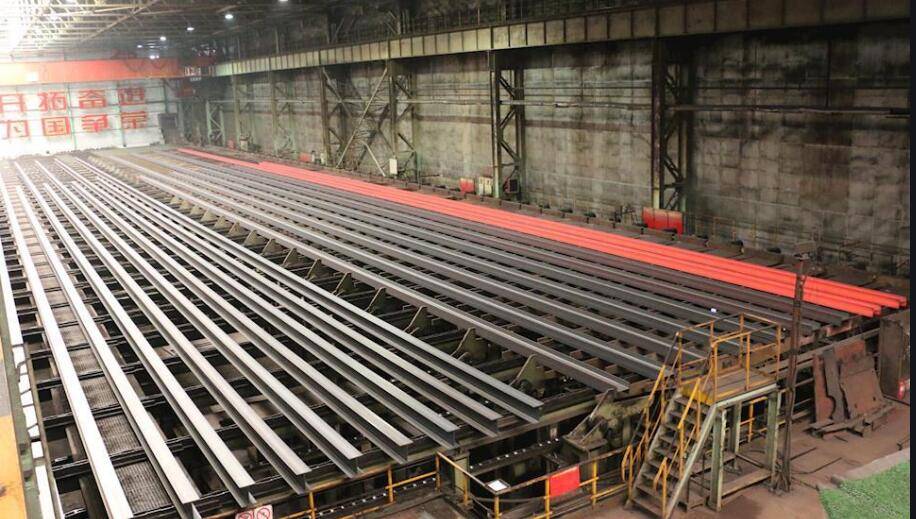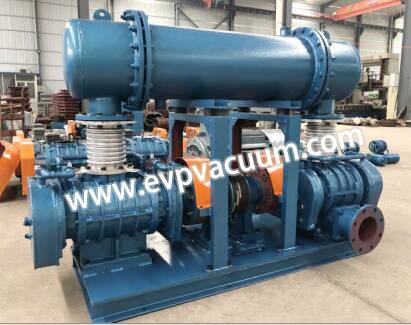Roots blower used in waste heat heating project of slag flushing water in steel plant
This paper first introduces the lower roots blower. Roots blower is a positive displacement fan which compresses and transports gas by relative movement of two blade shaped rotors in the cylinder. Its main function is gas transportation and pressurization, its main parameters are: flow, head, shaft power, speed, necessary NPSH, etc. Flow and head are the main performance parameters of Roots blower.
Secondly, in order to realize the linkage between gas-fired boiler and roots blower, the process requirements are the key, and the PLC program in the control unit is auxiliary. The program should be designed according to the process conditions required by the boiler for gas. The process flow can be simply expressed as follows: PLC is powered on, self checking is carried out within the set program, including the natural gas pressure at the inlet side and the pressure at the outlet side of Roots blower, and compared with the set parameters. When the operation requirements are met, PLC outputs the command and roots blower starts; At the same time, the main control of the boiler is powered on. When the outlet pressure of Roots blower reaches the gas pressure required by the boiler, the roots blower operates at reduced frequency. At this time, the boiler starts the ignition program and the system starts to run.
Compared with traditional fossil fuels, natural gas has obvious advantages, such as non-toxic, harmless and high calorific value. As an energy source, natural gas can effectively reduce the emission of greenhouse gases and dust, thus greatly improving environmental pollution. As a clean energy, natural gas can effectively improve the environmental quality.

With the coming of haze weather in winter in northern China, Hebei Province has made great efforts to control pollution and promote the development of “coal to gas” boiler. With the deepening of “coal to gas” work, the problem of gas source is gradually exposed.
In a steel plant slag flushing water waste heat heating project, due to the continuous increase of heating area, the heat source appears to be in short supply. The project decided to add two 17.5mw gas-fired boilers. However, the gas pressure of the gas-fired boiler is 40-60kpa, and the gas pipeline and pressure regulating cabinet are required to be laid for the pipeline gas of conventional gas company. Considering the tight construction period of the project and saving the cost, the gas with a pressure of about 4000Pa is used in the steel plant. In order to ensure the normal operation of the boiler, it is necessary to use roots blower to pressurize the gas. At the same time, the gas inlet of Roots blower is about 100 meters away from the gas pressure regulating cabinet in the plant. There is no precedent for this scheme, and the gas-fired boiler and roots blower are required to operate organically.
pressure control
Pressure control includes two aspects
(1) The pressure of main pipe and branch pipe of boiler gas pipeline.
Since there is no buffer tank at the outlet of Roots blower, the diameter of the gas pipeline is larger than dn400, while the gas pipeline at the boiler inlet is DN 100. According to Bernoulli equation, it can be concluded that there is a gap between the pressure of boiler gas inlet and that of gas main pipe. Through calculation, the difference between the pressure of branch pipe and that of main pipe is about 10KPA. Therefore, the main pipe pressure should be higher than the branch pressure in operation, so as to ensure that the boiler gas can meet the requirements Within the scope. The pressure limit of the solenoid valve of the boiler burner is 70kpa. After overpressure, the solenoid valve will be damaged. Therefore, the frequency conversion of Roots blower alone cannot meet the process requirements. In order to meet the process requirements, the main pipe is now installed with a pressure jump device. When the pressure reaches 65kpa, the pressure will be automatically released to protect the boiler burner solenoid valve.

(2) The inlet and outlet pressure of Roots blower.
Since the inlet pressure of Roots blower is about 4000Pa, in order to prevent roots blower from becoming negative pressure during normal operation, the process requires setting alarm point and shutdown point at the inlet, with alarm point of 2000Pa and shutdown point of 1000Pa;
In order to realize the linkage between the boiler load and roots blower, a pressure sensor is set at the outlet of Roots blower. When the boiler load changes, the value of pressure transmitter at the outlet of Roots blower will change, and then the value will be reflected in PLC. After PLC calculation, the frequency of roots blower will be adjusted, so that the outlet pressure of Roots blower can match the required pressure of boiler gas.
(The article comes from the Internet. If reprinting is not allowed, please contact our company to delete it.)
